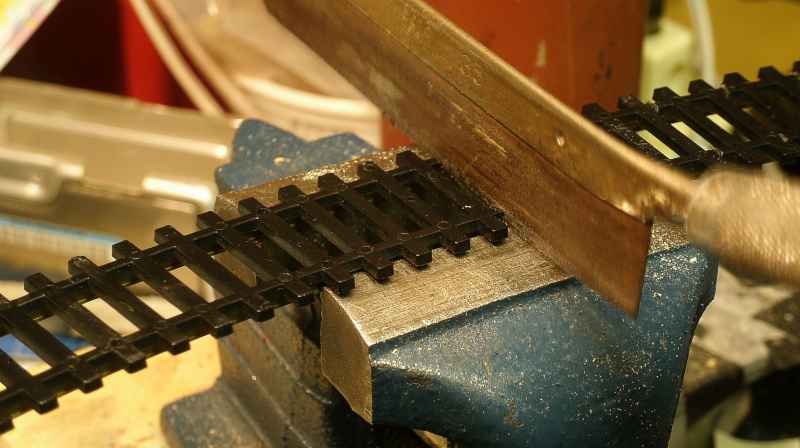
This is the last 'great addition' to my track plan, there is no other practical place to build a track in this corner of the room. This track allows me to operate the layout as two separate upper and lower circles, and that is easy to operate.
There's about 4 towns in the U.S. with the name Russelville. Mine is for the memory of my brother-in-law Russel. I ended up with his 6 boxes of model railroad equipment that he never set up.
There was a lot of Bachman sectional track, 18 inch radius, and since I was running low on 3-foot flex track, I made the sectional curve pieces into 'flexible curves' by cutting the runner between the plastic ties and then bent it to a new curve shape. Such as one end being 18-inch radius and the other end a larger radius to ease into a sharp curve.
When I laid the loop of Pleasant Valley, all I had room for was 18 inch radius. And I added a siding track inside that circle, its about 15 inch radius, made from the 18-inch radius sectional track where I cut the plastic runner and bent it to a smaller radius. And I put a curved spur circle inside of that, about 12 inch radius. And I put another curved spur inside of that, about 10 inch radius. I only park short 38- foot cement hoppers there. And these tracks are all superelevated or banked, which actually makes the radius seem a half inch larger and alleviates some problems at that small radius.
All made from those sectional track curves.
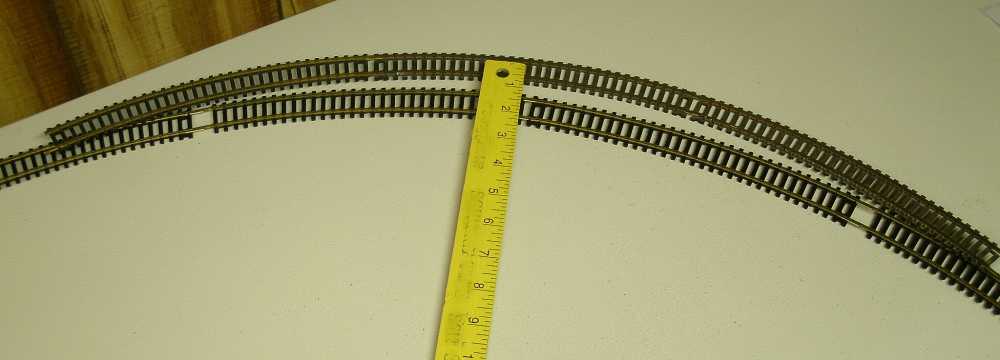 .
..
|
The lower level has been there for 20 years. (and never sceniced, painted, nor ballasted) The upper level is new where it comes around the end of the wall. All of this area has just enough room to sneak a track past an aisle. |
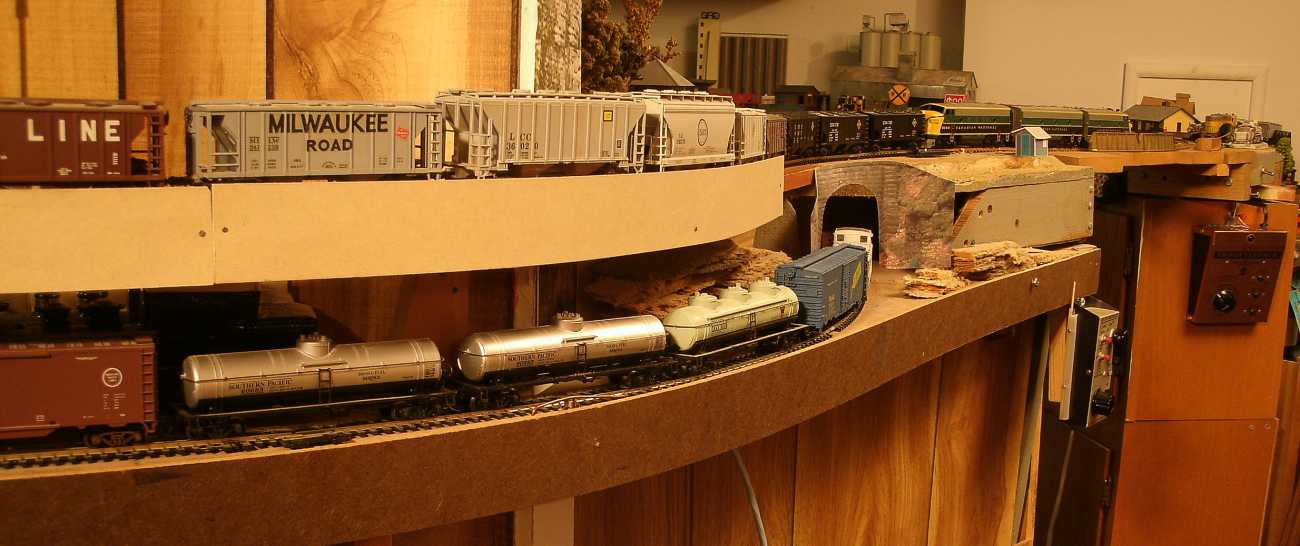 .
.
|
This is a higher view, showing how the new sectional track was eased around the S-curve and returns into the mainline. The curves are set for giving smooth operation of 50-foot cars at speed, even though the tighest part is 18-inch radius. It can handle a fast train, but looks best when trains are under 20 mph. I could have reduced the S, but then the upper track would hide the lower track too much, and limit getting my hands on trains on the lower level. That's just a paper face tunnel portal to hide the underpass. A lot of this area needs paint. But I use my imagination. And I park trains on it; they hide the plain areas. |
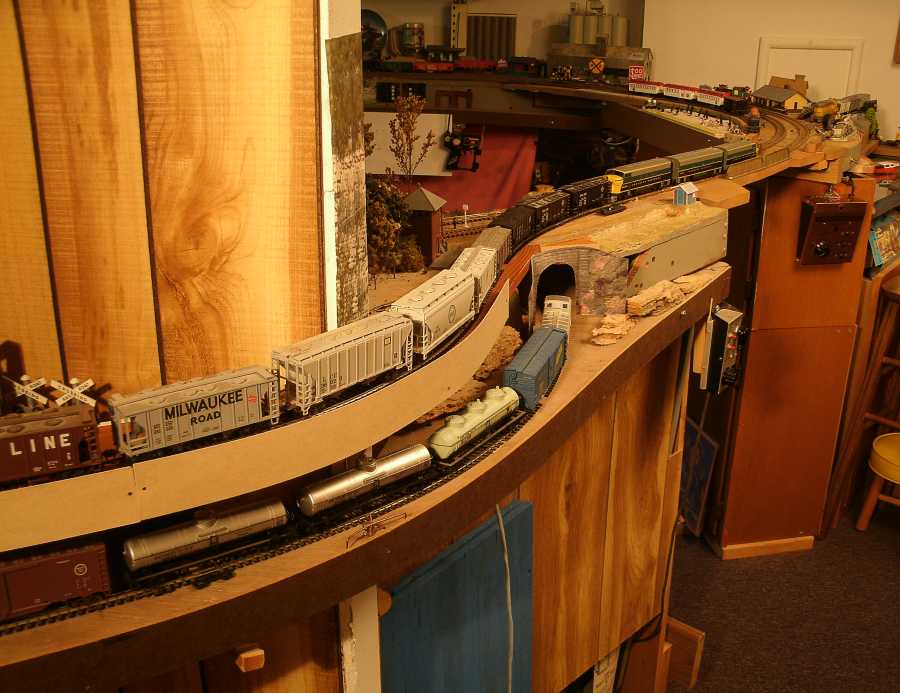 .
..
| Looking the otherway, the new upper level is on the left, twisting around the end of the wall. |
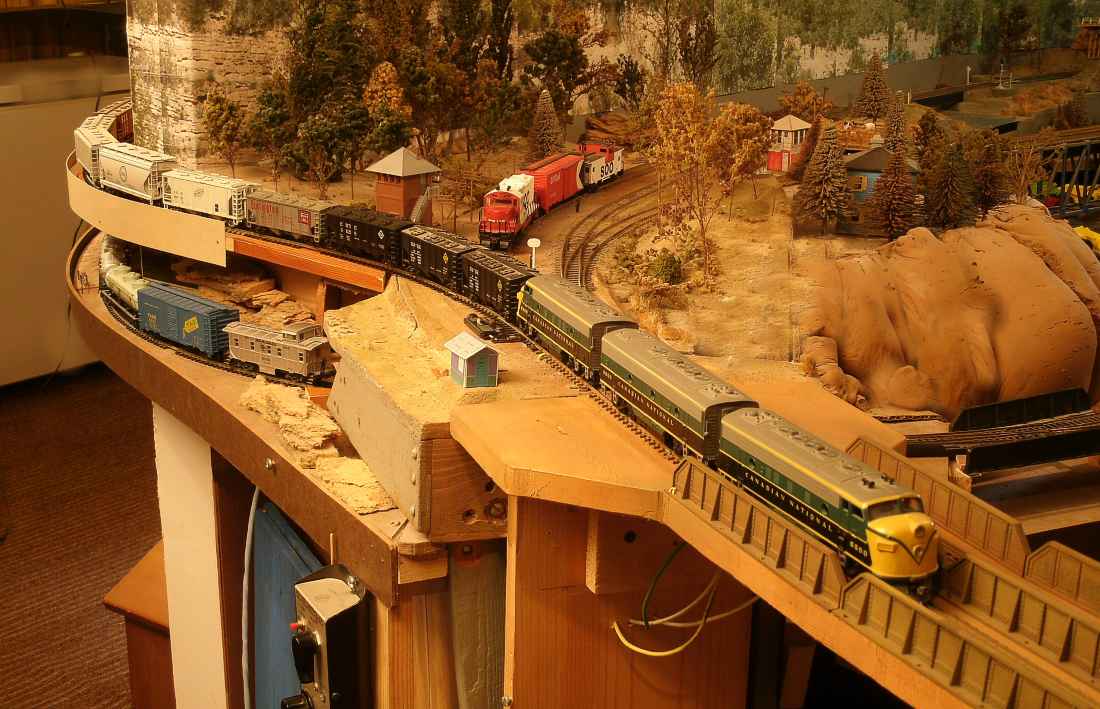 .
.
|
Russ had some buildings. A junction tower is in the picture above. Below, I set up the small Plasticville station, and have to paste on a label for Russelville. This track is shoe-horned in to some places. The vertical wood stick to the left of the station is actually a hanger rod from a shelf above; there is no space to suport this track from underneath because there's two tracks down there. This area could use more scenery, if I could figure how to do it in 3 inches of width. Probably some bridge would be best. Russel had a dozen plastic bridges, and I already used several down near my Mississippi River crossing. But since this corner is not near a readily viewed area, I will put my time in to improving the Mississippi River pontoon bridge that is up front in the room. |
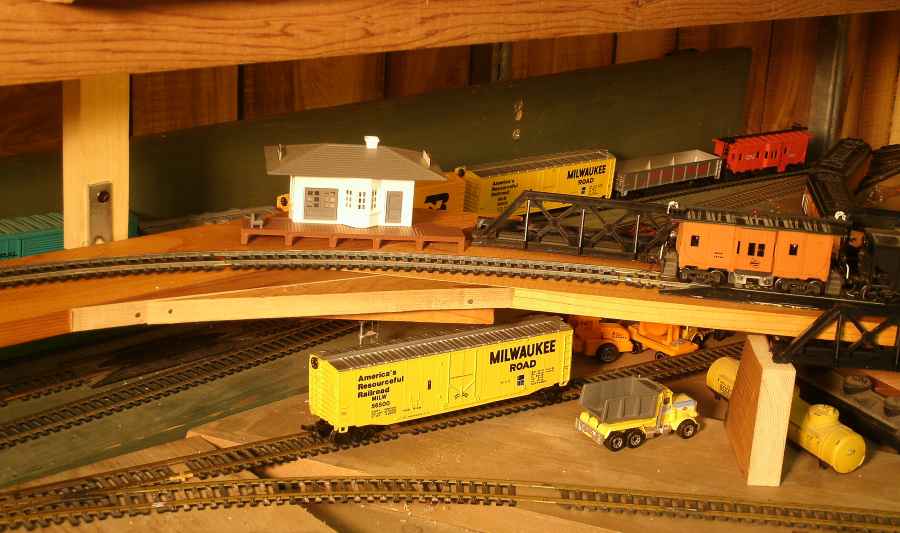 .
.
|
I updated the track plan, but since the original file is 20 years old and done with a different program, I had a problem getting the pencil line widths the same. The new track is the heavy green line on the left. I drew it schematic style, not showing the actual track location, because it would be confusing because the new track is directly above existing tracks. The Pleasant Valley loop is at the bottom of the page. It was good as a loop that could hold up to 4 trains, but it was time-consuming to operate. It had a manual reversing section which required a train to stop before going back down hill. Then the dispatcher had to figure how to get a train back into the operating scheme that would be running opposite the direction of all the other trains. It was interesting sometimes. When this area is run as a circular layout using the new track, instead of a reverse loop, I can keep 2 or 3 trains moving at the same time through these blocks, and it is easy. The new track lets trains run in a continuous circular loop around the layout; no reversing needed. But if I do want to reverse a whole train, it can still be done. Now, I can run two or three trains continuously around the layout, one following the other and always moving and all controlled by one throttle without a need to flip toggles for power section blocks. This is still not a DCC layout, but I know some tricks to keep 3 trains under control with an old power pack. |
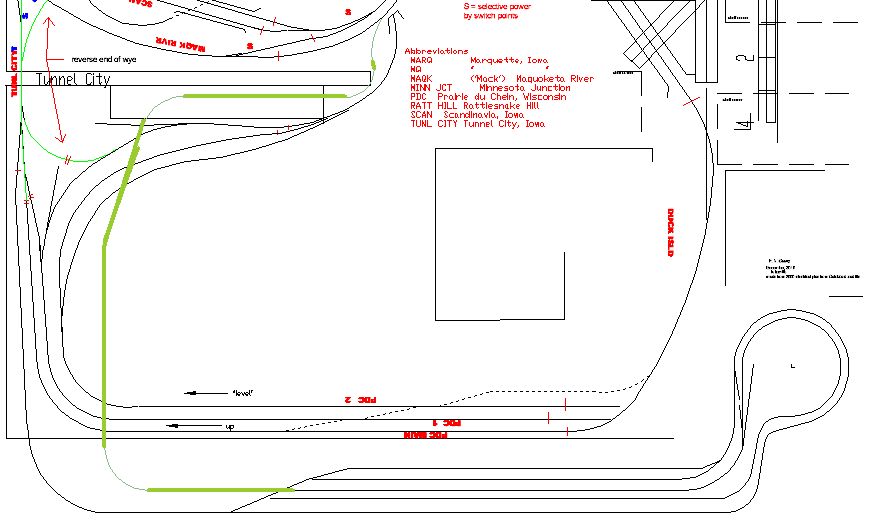 .
.
|
Here is a train along the wall, climbing the hill into Pleasant Valley. I installed a 30-year old double slip switch into the plan, and that track forms the circular layout, or if it is set to crossover, there is still a reverse loop. The new track to Russelville is on the right. |
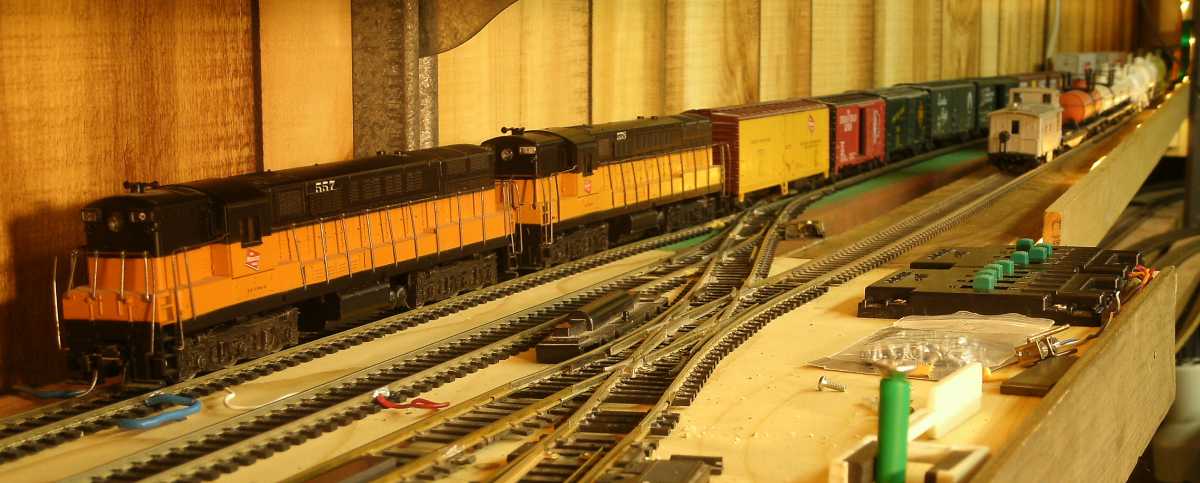 .
.
Here's a link to last year's plan of the model railroad,
the Pleasant Valley extension in 2019
. . . . . to My Main Index Page on the TrainWeb site.
This page was filmed and wrote in July, 2020